Teaching creativity to computers - Christian Guckelsberger wants to equip AI with the motivation to discover the unexpected
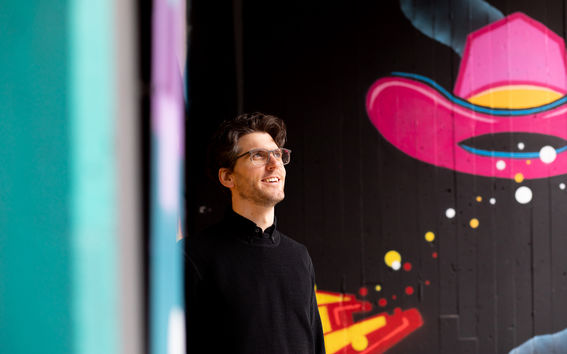
Since the 1950s, computers have served artists as tools to unleash and augment their creativity – and right from the start, AI researchers have wondered whether the machines themselves could be creative.
Today, computers produce art that people collect and even mistake for man-made. Christian Guckelsberger believes that something fundamental is still missing, though.
Guckelsberger is a postdoctoral researcher at Aalto University and the Finnish Center for Artificial Intelligence FCAI. He stands at the crossroads of some very different fields: computer science, art history, philosophy, and cognitive science. Armed with insights from all of these, he wants to get to the essence of what makes us creative, and help computers get the hang of it, too.
To do this, Guckelsberger believes we need to equip AI with intrinsic motivation – the thing that drives us people when we persistently do something while not aiming for any specific goal or benefit. While psychologists consider intrinsic motivation – of which curiosity is perhaps the most famous type – a cornerstone of human creativity, its role has received little attention by AI researchers.
Guckelsberger wants to fill this gap, and to do this he has chosen an environment where the imagination can roam free: video games.
'Video games have become arguably the most prominent AI testing ground in recent years', he explains. 'And creativity can flourish particularly well where we are allowed to playfully experiment'.
Christian GuckelsbergerVideo games have become arguably the most prominent AI testing ground in recent years
Where philosophical questions meet video game characters
Guckelsberger’s work is part of FCAI’s research on interactive AI. His insights support and enhance the interaction between AI and people, and could, for instance, lead to more robust and adaptive video game characters that require less cost- and time-intense fine-tuning by developers.
The possibilities of more creative AI are of course not confined to video games. Many real-world applications, from self-driving cars to household robotics, could benefit from this research.
'Our work provides the foundation for a whole family of new AI algorithms to drive more open-ended and robust human-AI interaction in other domains', Guckelsberger says.
Guckelsberger has also made several theoretical contributions that address fundamental questions about the future role of AI in creative activity: What does it take for a machine to be accepted by us as a creative partner? Could it truly be the author of its own ideas? And could we ever build an AI that intentionally exhibits human-like creativity?
'I would like to use an AI toolbox to complement what philosophers and psychologists can do, and also feed insights back into those disciplines'.
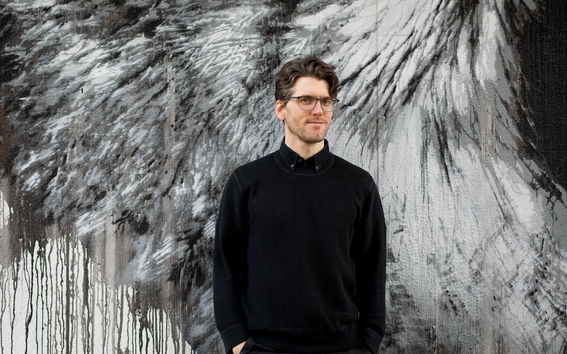
From a covid hotspot to the socially distant Helsinki
Guckelsberger’s journey into research begun with German university degrees in art history and computer science. An exchange year in Glasgow got him hooked on AI and the question whether computers could be autonomously creative.
'This shaped my future career'.
Guckelsberger eventually wrote his PhD at Goldsmiths College and Queen Mary, University of London, supervised by Professor Simon Colton who is a pioneer in computational creativity research. His demonstrations in video games caught the attention of Aalto University professors Perttu Hämäläinen and Antti Oulasvirta. Over a period of two years, they convinced Guckelsberger to choose Finland and Aalto University as his next destination.
Guckelsberger arrived in Helsinki last May, at a time when London was a European corona hotspot. He says he has not regretted the move once, and not just because of covid.
'Having spent six years in London, with all its rush and noise and pollution and stress, I felt like Helsinki was just the thing I needed to ground and inspire me again', he says.
The covid restrictions have made his start in Finland rough, though. Guckelsberger was lucky to get involved in a project at the Institute for Molecular Medicine Finland (FIMM) driving covid-19 research with AI, the results of which we will probably hear about soon. This required work on-site.
'Collaboration with FIMM saved me to a certain extent', he says.
Guckelsberger’s contract continues for another two years. He thinks computational creativity will gain even more relevance in the years to come – and continue to fascinate him.
Christian Guckelsberger is also a Visiting Research Fellow with Queen Mary, University of London. His PhD thesis “Intrinsic Motivation in Computational Creativity Applied to Videogames” can be read online here: https://research.aalto.fi/en/publications/intrinsic-motivation-in-computational-creativity-applied-to-video
Follow his creative endeavors on Twitter: @creativeEndvs.

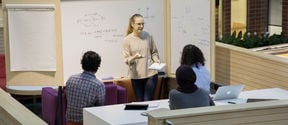
Department of Computer Science
cs.aalto.fi
- Published:
- Updated:
Read more news
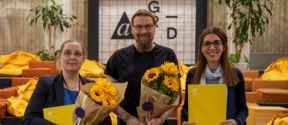
Aalto Open Science Award ceremony brought together Aaltonians to discuss open science
Last week we gathered at A Grid to celebrate the awardees of the Aalto Open Science Award 2023 and discuss open science matters with the Aalto community.
Seed funding available to boost collaboration between Aalto, KU Leuven and University of Helsinki
Aalto University, KU Leuven and the University of Helsinki launch the 2nd exploratory seed funding call to explore research collaboration possibilities. The funding call is open until 10 September 2024.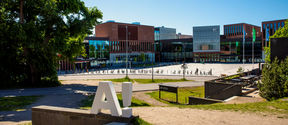
Professor Peter Hans Matthews works as a Fulbright-Aalto Distinguished Chair scholarship holder at the Department of Economics
Fulbright programmes and scholarships are highly appreciated in the United States